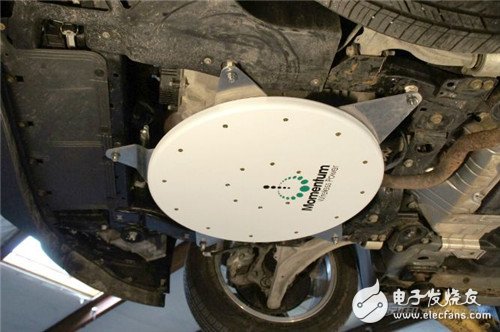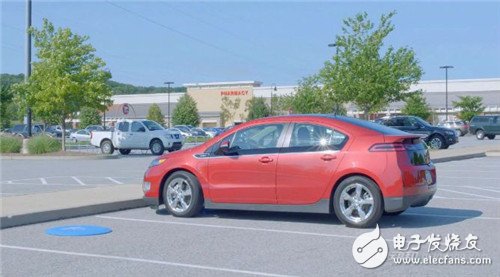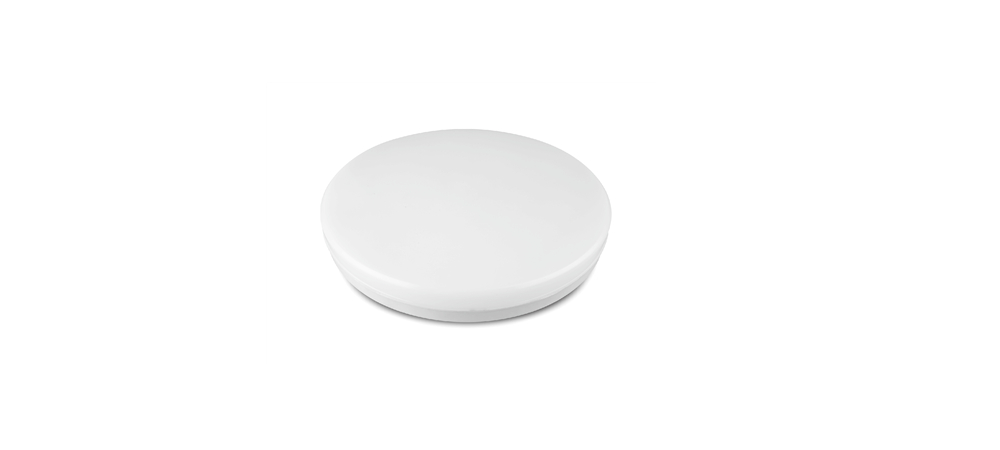Imagine if you could sit in the car and do the 4-7 hours of plug-in charging in less than an hour, that would be great. Is it far away? Actually not. Momentum Dynamics (hereafter referred to as MD) is quietly bringing this inductive charging technology to passenger cars and commercial vehicles. Momentum Dynamics wireless charging prototype MD CEO Andy Daga revealed that almost all passenger car and commercial vehicle companies are actively promoting the technology. Obviously, the electric car that can be quickly charged is more practical. The peak power of 50 kW of the Nissan Leaf can be filled in one hour (80% in half an hour), and the larger Tesla ModelS can also It is less than two hours full in its super charging station (official data peak power up to 130 kW). MD's home wireless charging device provides peak power of 10 kW (50A/240V) on the prototype. It does not require human operation at all, is safe and reliable, and the induced magnetic field generated by the current can “pass through†ice or even cement. The prototypes in public places have already measured peak powers of up to 50 kW. However, after many trials, the company believes that 25 kW is the "best power" and sets it as the standard. According to such data, the home-type wireless charger can charge 80% of an electric vehicle with a cruising range of less than 160 kilometers for half an hour, which is comparable to the current mainstream DC fast charging performance. working principle MD's inductive wireless charging technology is actually very primitive, dating back to the days when Nikola Tesla was still alive. The technical means is nothing more than installing an induction coil on the ground and on the car, but the design should be designed to be practical and elegant enough. These coils, which look like large donuts, are not only thin and efficient, but also designed by Bruce Long, MD's vice president. According to Daga, his charging system keeps the electromagnetic field within its application range and does not affect surrounding metal objects, such as metal parts on the car, which greatly improves the efficiency of its high-power charging. “The overall system efficiency is up to 91% for 25 kW continuous charging,†Daga said. “We will continue to increase efficiency to 93% in the future. This efficiency is the power of the battery to the power of the wall outlet.†Induction coil arranged on the chassis After five years of development, patent registration, prototype testing, etc., MD has successfully achieved heating without heating the surrounding metal, and the charging speed is comparable to that of the plug-in type, and the cost has not increased much. This technology has also passed the international electromagnetic pollution standard and is harmless to any animal. For the future large-scale commercial popularity, MD has also developed a solution to prevent mutual interference between two cars side by side. “This is actually a near-field communication,†Daga said. “It uses the electromagnetic field that exists in wireless transmission to transmit information while communicating.†The main problem solved by this technology is the signal generated when multiple vehicles are simultaneously charging. Mutual interference, this vulnerability is very likely to provide a channel for hacker attacks. MD is also considering registering the technology as a patent. A number of "behind-the-scenes" technologies, including this technology, are truly a magic weapon for MD to stay at the forefront of wireless charging, not just charging. At least one mysterious car company is currently evaluating MD technology and is likely to become a supplier. The electric car will be pre-configured according to MD's wireless charging technology during the development phase, and can be optionally installed at the dealership. The retail products currently being tested by MD will be formed within one year. In the future, the owner only needs to buy one receiving end and put it on the car at any time, just like the current level 2 charger. Maybe MD is not necessarily the first wireless charging company in the future, but the power of 5-10 kW (adjusted according to household electricity lines) is still the fastest. Daga expects that in the future, three-quarters of MD's products will be supplied to commercial vehicles, and one-quarter will be supplied to family vehicles, but the latter will gradually grow. In view of the current situation, Daga believes that each car company is betting on multiple technologies at the same time, but in the end, wireless charging is only a matter of time. So far, Tesla has not released any research on the technology, but other car companies, such as Toyota, are working with WiMD, a major competitor of MD, to develop in the United States at the Massachusetts Institute of Technology's WiTricity. In fact, WiTricity customers include Nissan, BMW and Honda. Unlike MD, WiTricity's technology is more advanced and uses magnetic field resonance to deliver electricity. The energy transmitting device and the energy receiving device resonate at a specific frequency to exchange energy with each other. An important advantage is that it does not require the electromagnetic induction charging of the MD company to be "coupled to the position", and it also allows the transmitting and receiving devices to be of different sizes, increasing the versatility and extensibility of the product. Especially for the car receiver, if the size can be reduced, the car company does not have to worry about all kinds of troubles caused by the vehicle weight. The development of electric vehicles is unstoppable Automatic charging is definitely a new growth point. For example, the sophisticated and sophisticated automatic charging robot introduced by Volkswagen recently. This may be a German-style engineering pride, but they are too complicated and the price is too high. At the same time, car companies have been trying to get rid of the charging line and charging plugs. There is no doubt that the automatic charging robot does not meet this demand. The automotive industry is currently facing a dilemma for this technology: on the one hand, conservative car companies are often reluctant to go too fast; on the other hand, they are also afraid that some companies will commercialize it in advance. Enterprises will have no way to go. Although many people still hold a wait-and-see attitude toward the development of electric vehicles, the recent research report by Goldman Sachs titled “The Subversive New Era of the Automobile Era†predicts that by 2025, one-quarter of the world’s models will be inserted. Electric hybrid or pure electric vehicle. In other words, in a total of 120 million vehicles, the volume of plug-in hybrid or pure electric will reach 30 million. At the same time, because the current main force in this field comes from policies and regulations, Goldman Sachs also predicts that there will be a change in the format of the business model in the next decade, and there will be new solutions for the charging method. “The automotive industry must open its arms to embrace technological change, and the urgency is much higher than in the past.†Goldman Sachs said in the report. Another report from Morgan Stanley is more optimistic about the future, as well as a future outlook based on policy forecasts. The report predicts that a decade after the US auto market, a quarter of new car sales will be electric-driven products, which is indeed very optimistic compared to today's 1%. Daga said that even if reality is only a small part of this number, at least more and more electric vehicles need to be recharged. Application scenario In addition to building several prototypes, Daga and his company also need to spend a lot of energy to promote their products into public places. A charging system with a price of more than $10,000 is too expensive for most store owners, although it can be used to attract electric car owners to their stores, but there are also many troubles. For example, some car owners will drive the car to the charging point of these stores to "steal" the electric charge all day. The Blink Charging Network plans to set a fine for this cheaper behavior, but some stores remain neutral. Although its products are aimed at a variety of users, MD's main business targets are those that do not stop all day, such as convenience stores, restaurants, shopping malls, and so on. It is very convenient for the owner to make up a long distance while stopping for an hour or two. At the same time, because of the characteristics of these locations, the phenomenon of charging points all day will not appear. In addition, Daga predicts that in the future, charging will gradually shift from household charging to public charging. After all, in many places in China, South Korea, and even Europe and the United States, not every home has a garage. In many places, no one has a garage. Therefore, Daga believes that wireless charging that can serve more electric vehicles will be more attractive. In China and other Asian countries, large-scale automatic parking is on the rise, and wireless charging is in line with their needs. “An electric car with a cruising range of 160-320 km can charge 25-80 km if it is stopped for a while, which will greatly extend the actual cruising range of the vehicle,†Daga said. “Compared to a larger battery, a more extensive charging network will give the electric car more energy.†Regarding the "stealing electric charge", Daga said: "We should not force people to change their way of life for cleaner transportation. We should encourage them to start changing." Daga himself objected to "stealing." The act of electric charging is fine. “Wireless charging allows people to change their electric habits without changing their behavior. People drive and then stop, charging when parking will make them forget to charge, it will be better than picking up the refueling gun. More convenient." Summary: Where is the road ahead? The technical application prospect of MD far exceeds the electric vehicle industry, and it has considerable potential in other fields such as medical equipment. But now its focus is on electric cars, and Daga is confident in the field. He believes that the current number of gas stations can fully meet the demand for cars on the road, but because electric vehicles need to be charged for a longer time, more charging points should be deployed, which is also an important reason for his prospects for MD. No one can predict what the future will be, but it is foreseeable that wireless charging will gradually emerge in the future and will be in line with the development of the global electric vehicle market. If all goes well, MD will eliminate the cables for those annoying plugs for us.
Circular Emergency Ceiling Light is according to the type can be divided into maintenance or non-maintenance . It is made of solid polycarbonate material , with protection rating of IP65 , suitable for indoor and outdoor use . It comes with a premium rechargeable lithium-ion battery with automatic monthly and annual detection .
Emergency Ceiling Light Emergency Light Ceiling,Industrial Emergency Light,Led Emergency Ceiling Lights,Ceiling Mounted Emergency Lights Jiangmen City Pengjiang District Qihui Lighting Electrical Appliances Co., Ltd , https://www.qihuilights.com




